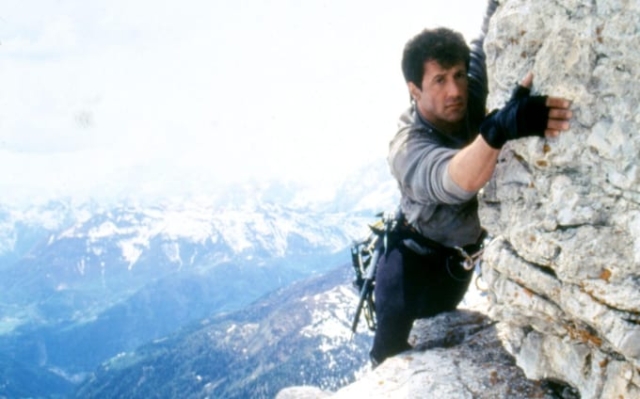 Sylvester Stallone in Cliffhanger
Sylvester Stallone in Cliffhanger
In the Dolomites, a vast mountain range in northern Italy, director Renny Harlin brought Sylvester Stallone to at the foot of an 11,000-foot peak. Harlin pointed up. That's where he planned to shoot Cliffhanger: on top of a mountain. In the movie, which was released in theaters 30 years ago, Sly will play a lifeguard who fights a gang of car thieves. But the actor admitted that he was afraid of heights. Stallone — Rambo himself — swore that he would not rise above the heels of his cowboy boots.
Cliffhanger was as much an expedition as it was filmmaking. The crew spent months in the Italian mountains (which doubled in the Colorado Rockies) with a team of world-class mountaineers making the ascents goosebumps. There were thunderstorms at 13,000 feet, a helicopter evacuation and — back in the US — a record-breaking aerial stunt. As leader of the expedition, Harlin had to add one more job to these requirements: to persuade Stallone to go higher and higher up the mountain.
Leaving the relative safety of those wide-heeled boots, Stallone ended up messing up, climbing onto ledges and dangling off them. The promotional video sought (perhaps even too much) to convince viewers that Stallone did indeed make quite a few real ascents. But Stallone wasn't near the Violet Towers in the Dolomites — a cluster of dizzying peaks — for the film's defining stunt: actress Michelle Joyner dangled from a line between the towers at 4,000 feet. Indeed, any mention of Cliffhanger and Michelle Joyner's great moment is almost certainly the scene that springs to mind before she sinks into her belly and conjures up some primal, bloodcurdling terror inside. And keeps. «When I watch it now, I'm really convinced that Stallone was up there,» says Joyner. “There is no way you can say that he wasn’t. I think: “So I really had to risk my life like that?”
In the opening scenes, Sarah and Hal (played by Joyner and Michael Rooker) are stuck on top of one of the peaks and must climb a tether-like tether to a rescue helicopter (a maneuver called the Tyrolean traverse). But Sarah's belt buckle clicks and mountain rescuer Gabe (Stallone) drops it. The purpose of this scene, of course, is to leave Gabe haunted by guilt that makes him mope like an emotionally bruised piece of stone. But it also does for height what Jaws did for sharks.
“People tell me that this scene is burned into their memory,” co-producer Jim Zatolokin laughs. «It's the only thing they remember!»
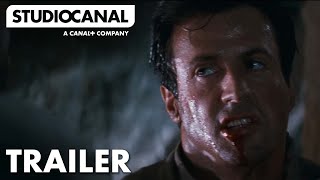
Cliffhanger began in the mid-1980s when co-producer Gene Hines saw a TV show about climbers. “It got him interested in the climbing world,” says Zatolokin. «It's a dynamic and unique world with many characters.» They enlisted the support of famous people. “We interviewed some of the great climbers and people in the climbing industry,” says Zatolokin. “We have stories and everything we can. We had five boxes of research files.”
But there was a problem in translating the idea into a compelling film. “It's an exciting sport, but it's not very interesting to watch,” says Zatolokin. “For a long time it was difficult to figure out how to turn rock climbing into an action adventure. There was Die Hard at the time, and the concept evolved into Die Hard on the Mountain.
Climber and writer John Long was brought in for treatment. A member of the pioneering Stonemasters, a group of hippie California climbers, Long made the first-ever one-day ascent of the 3,000-foot «Nose» of El Capitan in Yosemite. “He is just a legend in the climbing world,” says Zatolokin.
Long's premise was based on his own novella, Scoundrel Babylon, inspired by the true story of a Yosemite drug plane that crashed into a frozen lake in 1976 carrying 6,000 pounds of Mexican marijuana. As word spread, it sparked a heady gold rush — climbers, hippies, and speculators descended on the crash site to collect marijuana, which was baled in canvas bags. “I got there maybe two weeks after it was all over,” says Long. “At that time, everyone was getting rid of everything. Friends came to me with garbage bags full of grass and said: “Here, take this better!”
 Sylvester Stallone in The Rock Climber. Photo: Maximum Film/Alamy Stock Photo
Sylvester Stallone in The Rock Climber. Photo: Maximum Film/Alamy Stock Photo
For a long time he considered his story a “piece of popcorn” and did not write the script. Instead, Michael France (who later co-wrote GoldenEye) wrote a possible screenplay. In the story, the hijackers hold up a plane carrying US$100 million from the Treasury. But the plane crashes in the Rocky Mountains, scattering crates of money over the mountains. The villains, led by former intelligence mastermind John Lithgow, take a rescue team hostage, forcing the Rangers to move through the mountains and take $100 million.
«Die Hard on the Mountain» is absolutely correct. While Cliffhanger may be the last major entry in the hyper-muscular era of action movies led by Sly and Arnie, it's also the peak moment of a beloved sub-genre of the '90s: the «Die at [insert]» action movie. We also had Die Hard on the Battleship (Under Siege), Die Hard on the Bus (Speed), Die Hard on the Hockey Game (Sudden Death), and Die Hard on Alcatraz (The Rock). Harlin and Stallone were working on another variation called Gale Force—the crime film Die Hard in the Hurricane—when they signed up for Cliffhanger. “Die Hard during a hurricane never happened because Harlin and Stallone jumped Die Hard on the mountain,” says Zatolokin.
Harlin was furious after the success of the 1990s film Die Hard 2 (Die Hard at the Airport), which was even more successful than the original. Stallone at the time, however, wasn't so much scrambling as he was scrambling for a hit. A shortcut to carefree eating is the gangster comedy Oscars and, uh, Stop! Or my mom will shoot — failed. Stallone admitted that he «learned the hard way about comedy» and that «Cliffhanger» was his comeback in full action. “A rock climber is like a metaphor for my life – the rise and fall, peaks and valleys,” Sly said. «Do I have the strength to get back up?»
If there's any doubt about Cliffhanger's solidity, check out John Lithgow's gleeful turn as snarling, sadistic villain Eric Kualen. Harlin later stated that he wanted, oddly enough, David Bowie to play the villain («We had a meeting and we had a serious discussion about it») and then, even more oddly, Bryan Ferry of Roxy Music. Christopher Walken was drafted but dropped out, leaving Lithgow as the main villain. Lithgow decided to go «the way of Alan Rickman» with the character — a classic English bastard. Lithgow is still delighted that he was able to take on Sly in an upside-down helicopter — dangling from the top of a mountain, naturally — and how he skied over the weekend. Lithgow called Cliffhanger «the best job I've ever done.»
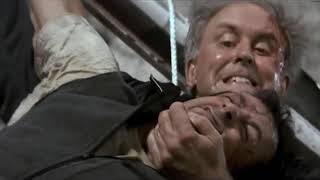
Bob Gaines, an experienced climber and co-author of How to Climb with John Long, joined the shoot as head of security. His first task was to teach Stallone how to climb. Gaines was impressed with the construction of a climbing wall on the grounds of Stallone's home in Bel Air. “He went up to 5.10c – that’s kind of an expert level,” says Gaines. “It shows that he had amazing athletic ability and his fitness level was extremely high. Going up 5.10c on the first day is one in a thousand.”
Although Gaines planned to take Stallone on some big real rock climbs, Sly didn't want to go out into nature, perhaps due to his fear of heights. However, Michael Rooker became a keen and capable climber. “He did some big climbs in Joshua Tree — 500 feet,” says Gaines. But he could not reproach Stallone for his commitment to action in the mountains. “He wasn't a diva on set,” Gaines says. “I was amazed at what he did. He jumped from the snowy slope and tumbled without any problems.
Ron Kauk and Wolfgang Güllich, considered the best climbers in the world at the time, were credited as doubles. Kauk, speaking in 2021, described how he was too skinny to double Stallone, so coach Stallone suggested Kauk start using steroids to gain weight. He was relieved when Güllich, who was closer in build to Sly, doubled Sly. Güllich also wore prosthetics to look even more like Stallone. According to Gaines, Sly wanted Güllich to be his doppelgänger after he saw a German climber doing one-finger pull-ups. Cliffhanger will be dedicated to Gullich's memory. He died in a car accident in August 1992.
The production was based in the city of Cortina d'Ampezzo, and the cast and crew were transported between the base camp and the mountainous areas by helicopter. Michelle Joyner didn't urge me to climb the mountain. That was the stipulation: she had to go up there. Renny Harlin explained at the audition that he wanted to open the film with a continuous first-person shot from a helicopter of her and Rooker stranded on a mountain. Rennie said: «The helicopter has nowhere to land, so you have to hang from the helicopter with a rope and someone will be there to grab you, pull you down and tie you to the mountain with an anchor.» harness,” recalls Joyner. “That was the first thing we did. It wasn't fun!»
The footage of Sly atop Violet Towers dangling from this fateful line was filmed in a studio. The shots were then interspersed with shots of Joyner, Rooker and Sly's stunt double, Mark De Alessandro, for real. As Joyner recalls, Stallone «never got more than a few feet off the ground» in his scenes. Joyner soon acclimatized to the altitude, racing back and forth down the line at 4,000 feet and running over an Indiana Jones-style rope bridge. “By the time we took off my things, I was no longer afraid,” she says.
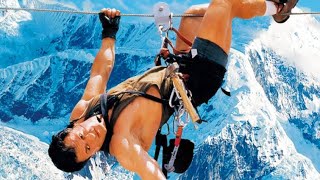
Joyner wore two harnesses for the scenes. One harness was part of her costume and broke on cue. The other was a real harness with wire that ran under her arm and held her securely. When the safety harness broke and Joyner had to let go of the aforementioned rope, suddenly hanging only on a hidden wire, the fear woke up. “When I got off the wire that day, I couldn’t even walk,” she says. “My legs just buckled. Looking back, I probably shouldn't have done this trick! It wasn't that I thought things were going to go wrong, it was just very scary. I was in tears. Even when you pretend, your body doesn't know it. You're still shaking and your legs are getting weak. It's just a natural human reaction.»
When Joyner arrived to film her studio scenes, she received a standing ovation for her daring stunt work. But her relationship with Stallone was, like those mountain peaks, cold. She wonders if it was because of the applause she received. “I don’t think he appreciated it,” she says. «I was like a reminder that he didn't have balls like mine to be there.»
What is so frightening in this scene is the horror itself — Sarah realizes that death, and terrible, is approaching her quickly. The scene was also partly inspired by a real life incident. In August 1986, a climbing novice fell to his death while training in Grand Teton National Park, Wyoming, after failing to secure the rope properly in his harness. The instructor in the incident was climbing legend and Stonemasters mentor Jim «Bird» Bridwell. One climber, posting about it on a forum, described how a few years later Bridwell opened up by the fire — he described the horror in the man's eyes as he fell, knowing that he was about to die.
The fall in the film, dubbed «Sarah's Death Drop», was created by combining footage of Michelle Joyner hanging at 4,000 feet and then falling into a studio airbag, along with footage of a mannequin falling and stuntwoman Georgia Phipps. 400 feet on the rappel line. “I drew a line on that,” says Joyner. «But we were all there, cheering and watching.» David Breashears, a mountaineer and filmmaker, worked as a cinematographer and detailed the experience in his memoir High Exposure. Breashears was worried about the fall. Instead of stretchable climbing ropes, the stunt team used cable. If it had been unwound incorrectly, the cable would have broken.
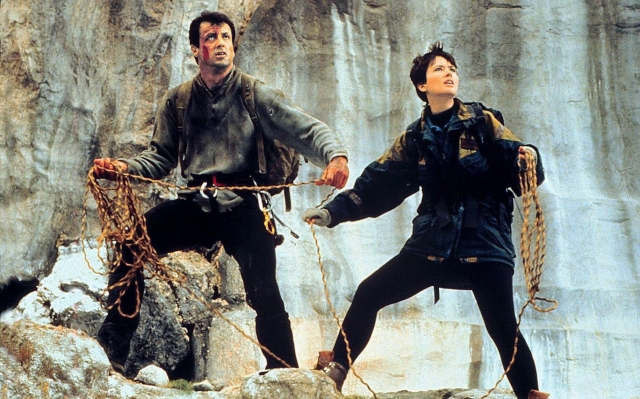 Sylvester Stallone and Janine Turner in Cliffhanger. Photo: AJ Pics/Alamy Stock Photo
Sylvester Stallone and Janine Turner in Cliffhanger. Photo: AJ Pics/Alamy Stock Photo
For Bob Gaines, the weather was the bigger problem. Production was immediately delayed by two weeks: «I think it was the biggest weather insurance lawsuit in movie history!» Gaines says, “and as production began properly, fog and lightning suddenly rolled in, forcing the crew to evacuate by helicopter. Sometimes they couldn't evacuate fast enough and had to hole up. Breashears described how it was surrounded by steel towers that were erected to house cameras. “We stood on a perfect lightning rod, and huge discharges of electricity fell to the ground around us,” he wrote. «Because each impact exploded like a bomb, the crew members scattered in all directions.»
“Five people were struck by ground current from lightning,” says Gaines. “One guy was blown off a cliff and fell overboard. He landed on a ledge at a depth of 15 feet.
British actor Craig Fairbrass, who played the main henchman, also recalls how he was pinned to the mountains by a storm. “I'm not good at height,” he says. “Some of the places we filmed were really terrifying. I remember being high—very high—and we were locked in with clamps. You changed ropes and clamps as you walked around the edges. I could never look down. I would just freeze. From time to time you heard this gigantic avalanche rumble.”
For Fairbrass, it was the right time, the right place, the right physique, the right accent. “I was a 6ft 3in Cockney,” Fairbrass says. His character, a footballer-turned-criminal, calls Michael Rooker's character a «punk slag screamer» and then kicks him like he's taking a penalty kick. (Although he calls football “football,” a word no self-respecting Englishman would use. “I still get messages from people saying, ‘I can’t believe you called it football!’,” Fairbrass laughs. . — I say: I didn't write it! Stallone changed it!»)
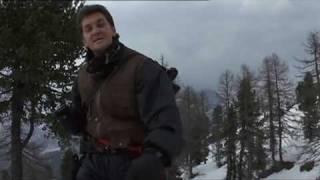
An obvious nod to the Tier 2 villains from Die Hard, Fairbrass' henchman epitomizes the pleasure of Cliffhanger: formulaic, expletive, heavily muscled, and deliciously brutal. Cliffhanger also outperforms Die Hard with his satisfying minion deaths. The character of Fairbrass is shot with a shotgun and thrown off a mountain—pleasant retribution—and Leon Robinson's villain is impaled on a stalactite—an exquisite death in an action movie.
For the final stunt, British stuntman Simon Crane performed an air transfer between two aircraft at 15,000 feet. The stunt cost $1 million and was named by Guinness World Records as the most expensive aerial stunt in history. At some point it was written off, but Stallone paid for it himself. “It probably came from his daily allowance,” Crane jokes.
Despite being well rehearsed, the transition to a jet, done at 150 mph, didn't go entirely smoothly. “At this altitude and speed it was very cold — minus 40 or 50,” says Crane. “I had to cover myself with a prosthetic mask. I was also wearing a gas mask and a SAS suit with a concealed parachute. But my hands were covered, so getting to the exit in an emergency was difficult. A hidden parachute is always dangerous because it has to open through your suit.”
Crane, acting as one of the hijackers, was hauled out of the first plane by a winch and pretended to slide on a weighted rope. “The idea was that another plane appears behind the formation, the door opens and they grab the cargo and pull me in. But they missed the weight. It passed over the wing of the plane and under the engine.» He continues: “I missed the door, hit the side of the plane and bounced onto the roof. Luckily, I just missed the engines… The pilot heard me crash onto the roof of the plane and lurched sharply to one side, throwing me to the other side. There was nothing to hold on to.”
Crane managed to parachute to safety. He offered to do it again, but was refused. “It looks scarier in the frame than it really is,” he says.
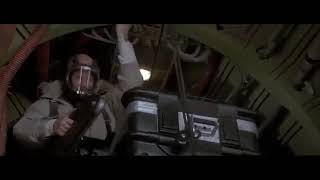
Cliffhanger was released in theaters on May 28, 1993. Critics were not particularly impressed with the formula. The Daily Telegraph critic called the Cliffhanger «high-energy high-rise bullshit». But it made a ton of money — $240 million worldwide — and outperformed Die Hard 2 at the box office. It also received three Oscar nominations.
There was some behind-the-scenes drama, with reports of financial difficulties at the production company Carolco Pictures (eventually sunk by Renny Harlin's 1995 pirate disaster, Cutthroat Island) and disputes over authorship. Cliffhanger also caused confusion in the climbing community with some less-than-mundane scenes: Sly using a bolter to secure belay equipment into rock (“That doesn’t happen,” says Long. “Grained granite? Not even a bullet can go through it!”) Joyner's buckle («It doesn't happen,» Long adds. «Things don't break»)
Climbing equipment brand Black Diamond, which supplied safety belts, was clearly not happy. The credits will include a disclaimer stating that the suspension has been «modified to create the crash described». “I think adding it to the credits made it even worse,” laughs Bob Gaines, who recalls his climbing students refusing to use a harness after Cliffhanger. «People said, 'That was a bad Black Diamond pendant!'
Now Stallone has signed up for a belated sequel. But can a CGI-era action movie overcome the literal heights of Cliffhanger? It remains one of the most impressive action films ever made, shot on a scale that goes way beyond the usual Die Hard knockoff.
And like poor doomed Sarah hanging from that rope, it makes her stomach churn 30 years later. “It’s still hard for me to watch it,” says Michelle Joyner. «I really was up there.»



















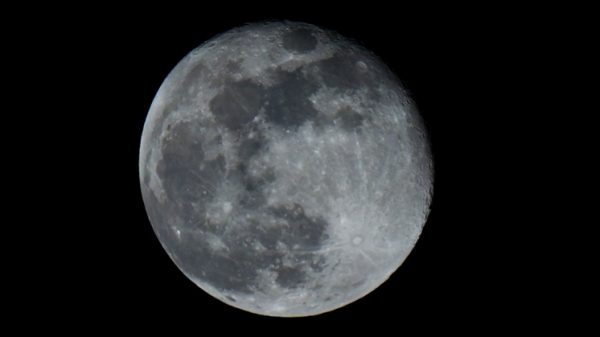






































Свежие комментарии